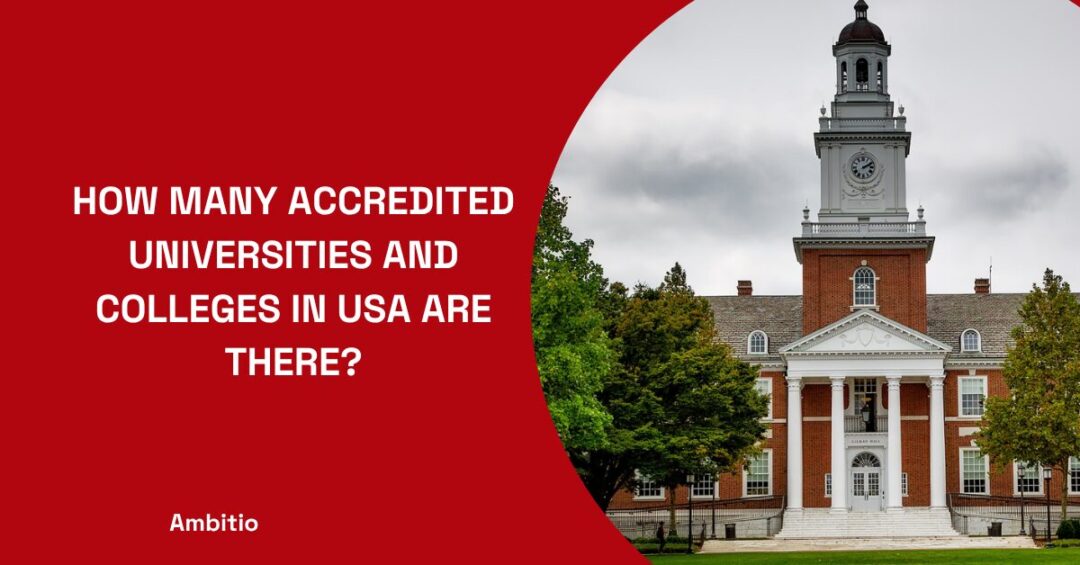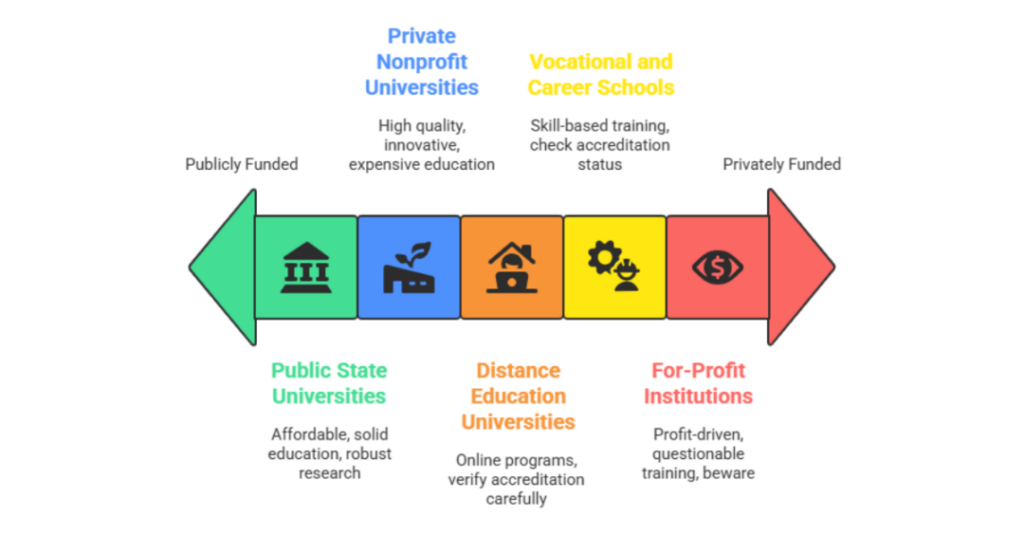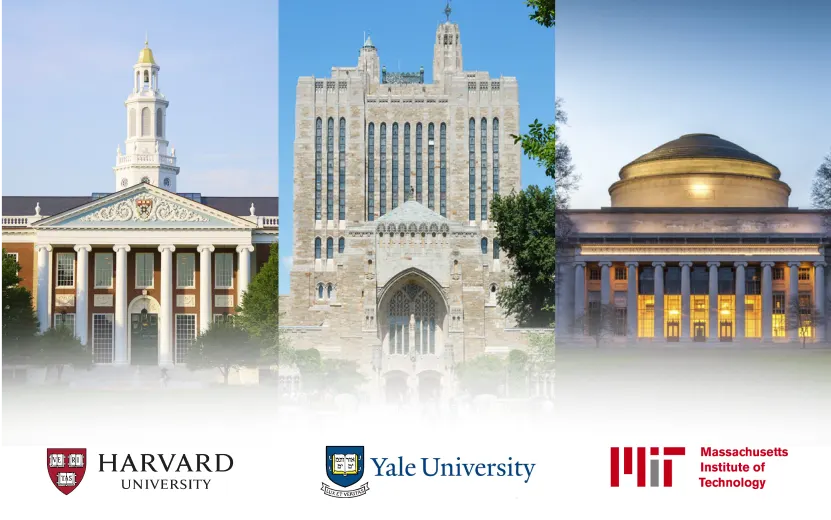24 July 2025
5 minutes read
How Many Accredited Universities And Colleges in USA Are There?

Key Takeaways
- Know how many accredited universities in USA exist with over 3,900 institutions listed by the Department of Education.
- Check if a university is recognized by a nationally approved accrediting agency before applying.
- Understand the differences between public, private, for-profit, and distance education institutions for better choices.
As of 2021, the United States had approximately 3,982 accredited colleges and universities, according to the U.S. Department of Education. That includes about 1,625 public, 1,660 private nonprofit, and 697 private for-profit institutions. Sounds like a buffet of academic choices, right? But here’s the kicker—not all of them are worth your time or tuition.
Every year, thousands of students get lured into shiny brochures, flashy program names, and rankings that mean absolutely nothing in the real world. The problem? Most don’t even check if the institution or program is properly accredited. One wrong choice and you could end up with a degree that’s not recognized, credits that won’t transfer, and employers who won’t take you seriously. This blog lays it out clearly—what accreditation means, how to verify it, and how to filter real value from just another for-profit trap dressed as higher education.
What Types Of Universities Are There In USA?
If you thought choosing a university in the U.S. was as simple as picking the biggest name or going where your cousin went—welcome to the jungle of 4,000+ postsecondary institutions, each with their own classification, funding model, oversight, and accreditation system. Some are Ivy League towers of prestige; others are career schools with flashy marketing and zero credibility. The U.S. Department of Education is required by law to publish a list of nationally recognized accrediting agencies, but trust me, not all educational institutions listed there are created equal.

Here are some main types:
Public State Universities
State universities are publicly funded institutions of higher education supported by state governments, like the University of Georgia, Tennessee, or Oregon. These accredited institutions typically offer more affordable tuition for in-state students, and often have robust faculty, research funding, and campus life. While the education or training provided is generally solid, don’t assume all programs are gold—accrediting agency status still matters, especially if you’re looking for federal financial aid or transferring credits.
Private Nonprofit Universities
These private nonprofit schools—think Stanford or Emory—aren’t owned by the government but reinvest surplus funds back into academics, training, and student services. Their accreditation activities are usually overseen by a regionally accredited accrediting commission. Many lead in quality of education or training, innovation, and inclusion, but they also come with a steep price tag. Pro tip: check their recognition under the council for higher education accreditation (CHEA) and make sure the accrediting agencies that the Secretary of Education recognizes have signed off on them.
For-Profit Institutions
These are run like businesses, and the goal is exactly that: profit. While some may be accredited schools or degree-granting institutions, others exist in a legal gray area, offering questionable training provided by the institutions. Many of them operate online under the guise of distance education and can appear attractive for working adults—but beware. The Secretary of Education is required by law to publish which of these are actually on the list of nationally recognized accrediting bodies. If it’s not there, your degree may be worth less than your student loan bill.
Distance Education Universities
These colleges and universities offer programs fully online, ideal for working professionals or students in remote areas. While distance education is increasingly popular, it’s also the Wild West—so the burden is on you to verify whether the program is backed by a nationally recognized accrediting agency. Online schools must meet the same rigorous accreditation system as campus-based educational institutions, especially to offer federal financial aid.
Vocational and Career Schools
These postsecondary institutions specialize in skill-based training for jobs in fields like tech, health care, and trades. Some are for-profit institutions, and others are private nonprofit or publicly funded. Either way, accountability is everything—ensure your program appears in the list of accredited programs published by the federal government and reviewed by reliable authorities under CHEA or the Department of Education.
How Many Accredited Universities In USA?
According to the National Center for Education Statistics, the U.S. is home to over 3,900 accredited universities and colleges—which, fun fact, is more than the number of McDonald’s in the country. But here’s the real twist: just because a school is “accredited” doesn’t mean it’s legit, affordable, or even useful. Between for-profit traps, diploma mills dressed up with glossy websites, and a maze of accrediting agencies that the Secretary of Education recognizes (or doesn’t), figuring out where to study feels more like decoding a government conspiracy than planning your future.
10 Top Accreditation Institutions in USA For Indian Students
America’s university scene is a wild cocktail of brilliance, bureaucracy, and big bucks. While the Secretary of Education is required by law to publish a list of nationally recognized accrediting agencies, not all institutions of higher education under that umbrella are created equal. And for Indian students investing ₹50+ lakhs into a foreign degree, picking the wrong name off that list could mean graduating with more student debt than job offers. So forget the rankings for a second—follow the money, the outcomes, and the recognition.
Here’s a table of 10 top accredited schools that consistently deliver value, credibility, and ROI—especially for prospective students from India:
| University/Institution | Average Annual Tuition Fees (USD) | Average Starting Salary (USD) |
|---|---|---|
| Massachusetts Institute of Technology (MIT) | $53,790 | $95,000+ |
| Stanford University | $56,169 | $90,800+ |
| University of California, Berkeley | $47,160 (for international students) | $85,000+ |
| Carnegie Mellon University | $60,000 | $88,400+ |
| Georgia Institute of Technology | $32,876 | $79,000+ |
| University of Illinois Urbana-Champaign | $36,018 | $78,600+ |
| Columbia University | $65,524 | $85,900+ |
| University of Michigan | $55,334 | $83,000+ |
| University of Southern California (USC) | $66,640 | $81,800+ |
| Purdue University | $31,104 | $75,500+ |
Conclusion
The U.S. higher education system is vast, layered, and not always transparent—but that doesn’t mean you have to gamble with your future. Know what to look for, dig deeper than rankings, and don’t let shiny brochures do the thinking for you. The right university isn’t just the one that looks good on paper—it’s the one that holds up in real life.
To get into a top U.S. university isn’t just about grades—it’s about strategy. Ambitio’s AI-powered platform and expert consultants help you tackle applications, study gaps, and visa approvals with confidence. No confusion, no wasted time—just a clear path to your dream school. So if you want to study in USA, Ambitio is the answer.
FAQs
How many accredited universities are there in the United States?
There are nearly 4,000 accredited, degree-granting postsecondary institutions in the U.S. as of the 2019–2020 academic year
Does this number include both colleges and universities?
Yes, the figure includes both accredited colleges and universities that offer associate degrees or higher
What types of accreditation exist in the U.S.?
There are two main types: institutional accreditation (for entire colleges/universities) and programmatic accreditation (for specific programs within those institutions)
Who recognizes accrediting organizations in the United States?
Accrediting organizations are recognized by the U.S. Department of Education or the Council for Higher Education Accreditation (CHEA)
How often is the number of accredited universities updated?
The number changes regularly due to new accreditations, mergers, and closures. The most recent comprehensive data is from the 2019–2020 academic year
Why is the exact number of accredited universities sometimes difficult to pinpoint?
The total may vary based on counting branch campuses, institutional mergers, and the closure or loss of accreditation of certain institutions

You can study at top universities worldwide!
Get expert tips and tricks to get into top universities with a free expert session.
Book Your Free 30-Minute Session Now! Book a call now




























